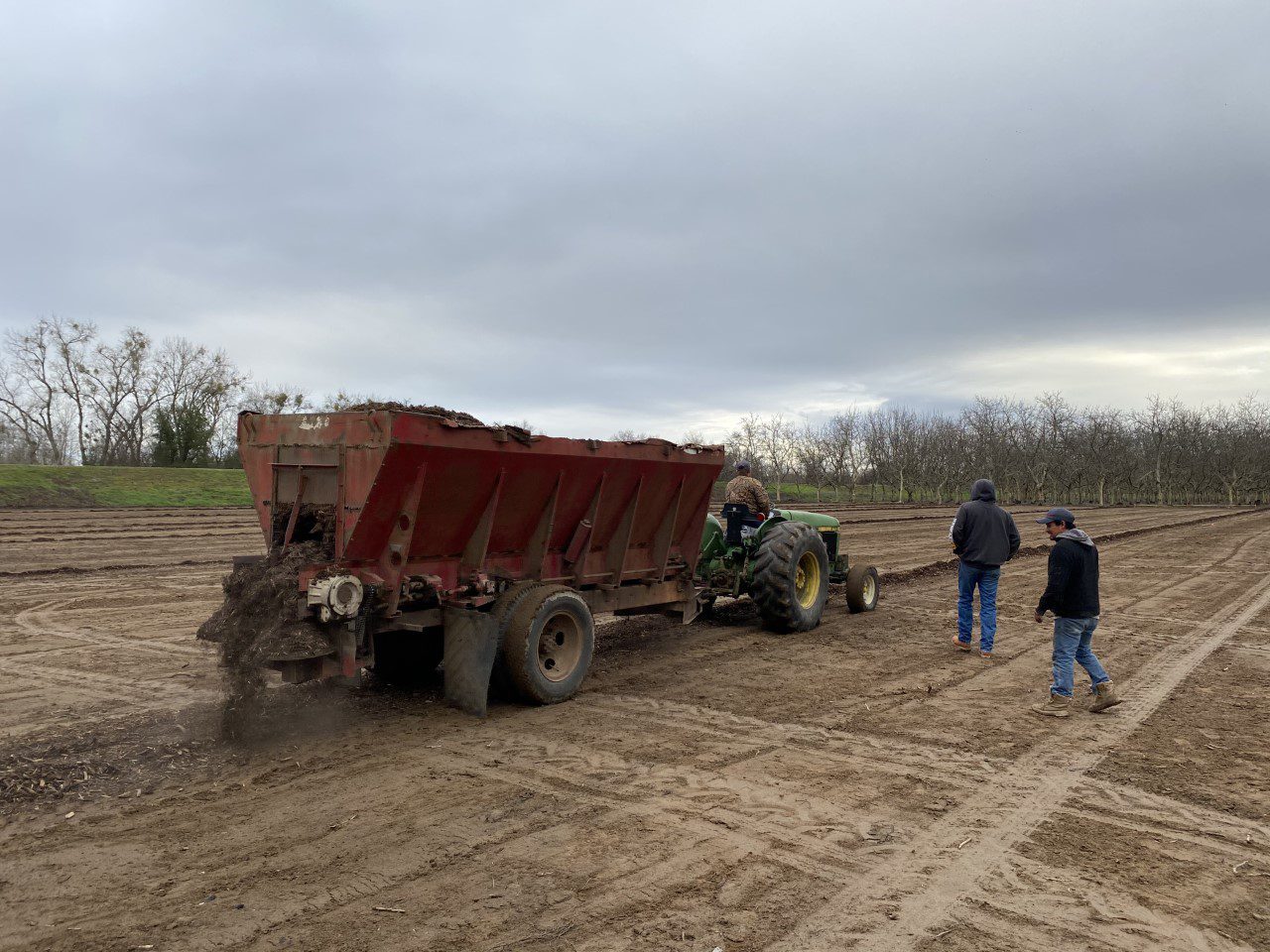
Research continues to refine nutritional inputs for new trees planted after whole orchard recycling.
Whole orchard recycling (WOR) is the process of pulling out older, unproductive trees, grinding them into woodchips and then spreading the chips on the orchard floor and incorporating them into the soil before replanting. The practice has been done mostly in almond, but it can be done in walnut and other tree crops. The longer life and larger size of walnut trees increases the amount of biomass generated from WOR.
Leading the WOR research team is UCCE Pomology Farm Advisor Brent Holtz, UCCE director in San Joaquin County. UCCE Orchard Systems Farm Advisor Luke Milliron in Butte County is conducting research in walnut WOR.
Recommendation for WOR nitrogen (N) applications in first-year almond trees is currently at five ounces of N per tree or about 45 pounds of N per acre per year. Typically, growers apply three ounces of N per tree when they are replanting without WOR, Holtz said. With walnuts, the current recommendation is twice the amount of N used in standard new orchard plantings. The reason for early and higher N amounts, Holtz explained, is the high carbon to nitrogen ratio that typically results after recycling. Newly recycled and replanted orchards have a high soil carbon to nitrogen ratio which immobilizes the available N to trees.
Wood chip analysis in almond WOR shows that 60 tons per acre of chips contain roughly 400 pounds of nitrogen, 800 pounds of calcium and 250 pounds of potassium. Even with incorporation into the soil, the N in the chips is not available to the trees during the first year but becomes available gradually as the wood chips decompose.
Holtz said granular application of Triple 15 fertilizer have produced good results for planting after WOR. It is difficult to get the needed amount of fertilizer to young trees through a drip irrigation system the first year because the root systems are so small—only 20% of the emitters are close to the trees, Holtz said. Granular applications are watered in. In Holtz’s 2020 trial, one quarter ounce of N was applied to each in the form of Triple 15 at planting time, and another application every two weeks with irrigation resulted in better growth than conventionally planted and fertilized trees.
New research trials underway are using three different N rates, Holtz said, with the goal of determining if growers can use less nitrogen in the long term if they recycle their orchards.
The amount of biomass from walnut WOR is considerably higher than almond, making it difficult to fully incorporate all the wood chips. Current recommendation is 10 ounces of N per tree per year, double the standard rate of five ounces per tree per year. Holtz said he hopes that less nitrogen will be required to avoid late season growth in the fall just in case there is an early freeze.
One new factor in WOR, Holtz said, is that the sawdust created in the chipping process may have an early benefit to soil organic matter. Raising the percentage of organic matter in the soil helps hold N in the root zone.

Cecilia Parsons
Cecilia Parsons has lived in the Central Valley community of Ducor since 1976, covering agriculture for numerous agricultural publications over the years. She has found and nurtured many wonderful and helpful contacts in the ag community, including the UCCE advisors, allowing for news coverage that focuses on the basics of food production.
She is always on the search for new ag topics that can help growers and processors in the San Joaquin Valley improve their bottom line.
In her free time, Cecilia rides her horse, Holly in ranch versatility shows and raises registered Shetland sheep which she exhibits at county and state fairs during the summer.















